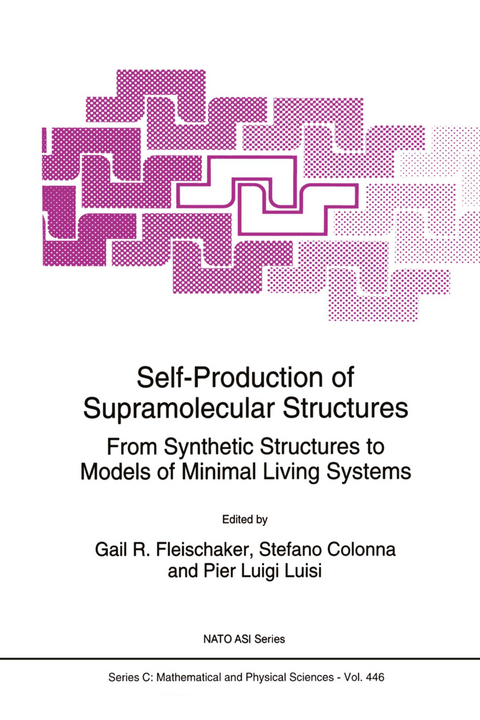
Self-Production of Supramolecular Structures
Springer (Verlag)
978-94-010-4324-3 (ISBN)
The book is written at a moderately technical level, appropriate for use by researchers and by students in upper-level undergraduate and graduate courses in biochemistry and molecular biology. The overall interest of its subject matter provides an excellent introduction for students who wish to understand how the foundational knowledge of chemistry and physics can be applied to one of the most fundamental questions now facing the scientific community.
The editors are pioneers in defining what we mean by the living state, particularly the manner in which simple molecular systems can assume complex associations and functions, including the ability to reproduce. Each chapter of the book presents an up-to-date report of highly significant research. Two of the authors received medals from the National Academy of Science USA in 1994, and other research reported in the book has been featured in internationally recognized journals such Scientific American, Time, and Discover.
Historical and Philosophical Perspectives.- Historical overview to the quest of self-reproduction and artificial life.- On defining life.- A few precautionary words concerning terminology.- Template Chemistry.- Molecular replication: From minimal to complex systems.- Self-replication and reproduction: From molecules to protocells.- Extrabiotic replication and self-assembly.- The prebiotic synthesis and replication of RNA oligomers: The transition from prebiotic molecules to the RNA world.- Template-directed synthesis of oligomers: Kinetic vs. thermodynamic control.- Chirality and Replication.- Chirality and the first self-replicating molecules.- Are peptides possible support for self-amplification of sequence information?.- The RNA World.- Minimonsters: Evolutionary by-products of in vitro RNA amplification.- Models for the autocatalytic replication of RNA.- RNA species that multiply indefinitely with RNA polymerase.- Chemical oscillations and non-linear chemical kinetics.- The Cell View and Cell Models.- The chemical implementation of autopoiesis.- Molecular recognition in micelles.- Self-reproducing vesicles.- Sources and syntheses of prebiotic amphiphiles.- Ancient paralogous duplications and the search for Archean cells.- Posters.- Self-replication of oligonucleotides in reverse micelles.- Liposomes from lipidonucleotides and from lipidopeptides.- Dendritic luminescent and redox-active supermolecules made of transition metal complexes.- Layer-by-layer adsorption: The solid/liquid-interface as a template for the controlled growth of well-defined nanostructures of polyelectrolytes, proteins, DNA and polynucleotides.- Molecular recognition of amino acids by RNA.- Towards nature’s structural guidelines: Conclusions on the unsolved structures of RNA-dependent RNApolymerases.- A self-catalyzed (autopoietic) synthesis of an anionic surfactant: Experimental evidence and theoretical modeling.- Competition, reciprocity, and mutation at the molecular level: Irradiation of a synthetic replicator generates a superior species.- Giant vesicles.
| Reihe/Serie | NATO Science Series C ; 446 |
|---|---|
| Zusatzinfo | XVII, 317 p. |
| Verlagsort | Dordrecht |
| Sprache | englisch |
| Maße | 160 x 240 mm |
| Themenwelt | Geisteswissenschaften ► Philosophie ► Erkenntnistheorie / Wissenschaftstheorie |
| Naturwissenschaften ► Biologie ► Biochemie | |
| Naturwissenschaften ► Chemie ► Anorganische Chemie | |
| Naturwissenschaften ► Chemie ► Organische Chemie | |
| Naturwissenschaften ► Chemie ► Physikalische Chemie | |
| Technik ► Maschinenbau | |
| ISBN-10 | 94-010-4324-8 / 9401043248 |
| ISBN-13 | 978-94-010-4324-3 / 9789401043243 |
| Zustand | Neuware |
| Haben Sie eine Frage zum Produkt? |
aus dem Bereich


![Was heißt Denken?. Vorlesung Wintersemester 1951/52. [Was bedeutet das alles?] - Martin Heidegger](/media/113619842)